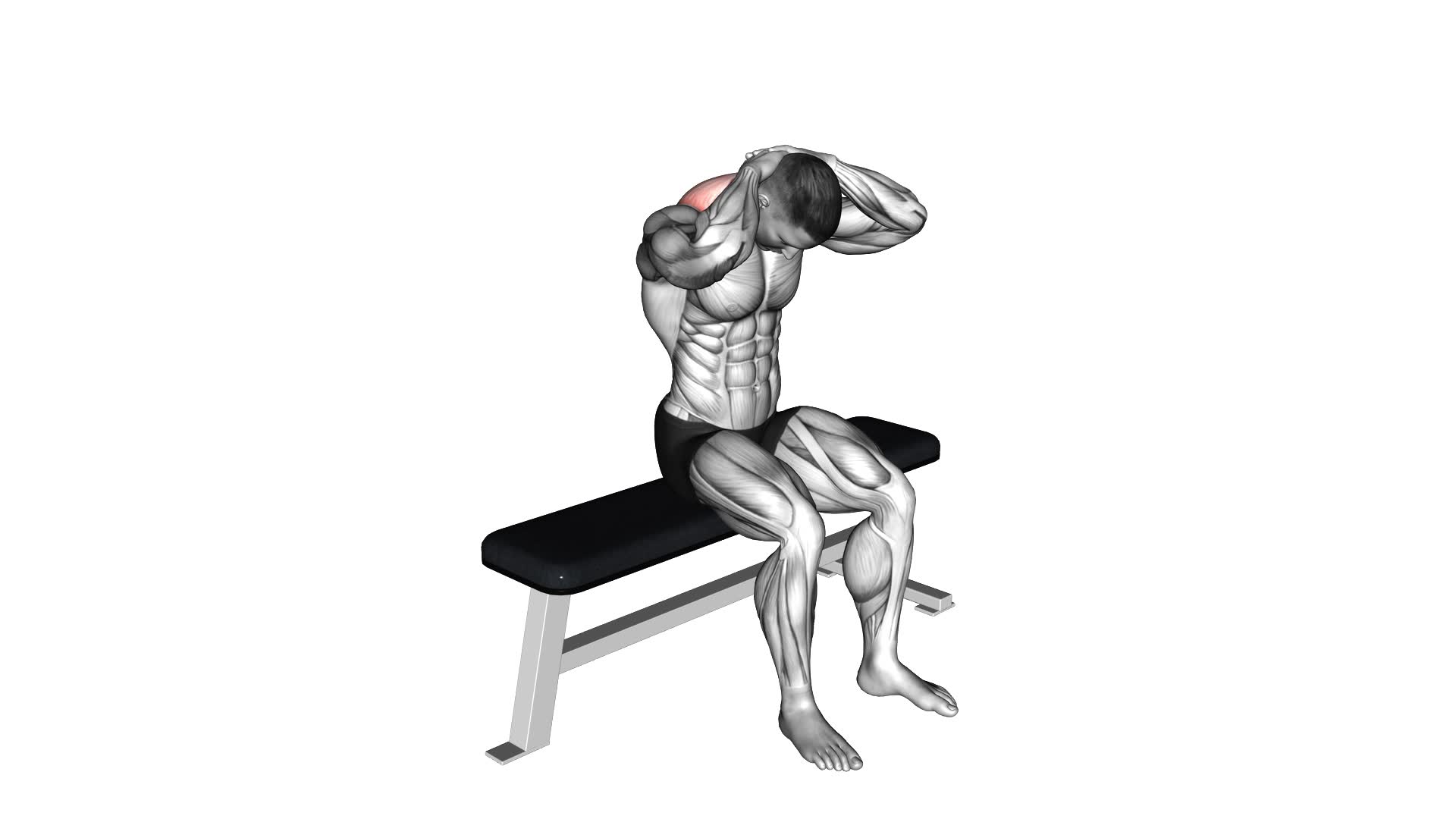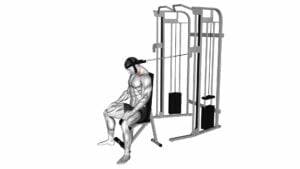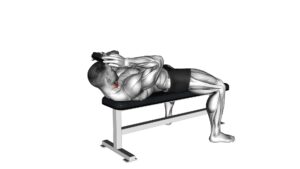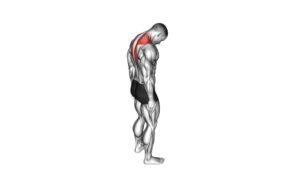Seated Flexion And Extension Neck (male) – Video Exercise Guide & Tips

Are you looking to strengthen and improve the flexibility of your neck muscles? Look no further than seated flexion and extension neck exercises.
Watch This Exercise Video
In this video exercise guide, we'll walk you through the proper form and technique for these exercises, as well as common mistakes to avoid.
We'll also provide tips for increasing intensity and progressing in your workouts.
Get ready to enhance your neck strength and mobility with this informative guide and accompanying video.
Key Takeaways
- Seated flexion and extension neck exercises can improve posture and reduce the risk of forward head posture.
- These exercises can alleviate neck pain and discomfort and increase flexibility and range of motion.
- Choosing the right chair is important for performing seated flexion and extension neck exercises effectively.
- It is crucial to maintain proper form, engage core stability, move slowly and with control, and listen to your body during these exercises.
Benefits of Seated Flexion and Extension Neck Exercises
Seated flexion and extension neck exercises offer numerous benefits for individuals looking to improve neck flexibility and strength. These exercises not only target the muscles in the neck but also contribute to overall health and well-being.
One of the key health benefits of seated flexion and extension neck exercises is improved posture. Many people suffer from poor posture due to prolonged periods of sitting or looking down at electronic devices. These exercises help strengthen the neck muscles, allowing for better alignment of the spine and reducing the risk of developing a forward head posture.
Additionally, performing seated flexion and extension neck exercises can help alleviate neck pain and discomfort. By increasing flexibility and strength in the neck muscles, these exercises can reduce tension and stiffness, promoting better range of motion and reducing the risk of injury.
Proper form and technique for seated flexion and extension neck exercises are crucial to maximize the benefits and minimize the risk of injury. It's important to maintain a neutral spine position and avoid any jerking or sudden movements. Gradually increase the range of motion and resistance as your strength and flexibility improve.
Incorporating seated flexion and extension neck exercises into your fitness routine can have a significant impact on your overall health and well-being. Not only will you experience improvements in neck flexibility and strength, but you'll also enjoy the benefits of better posture and reduced neck pain.
Proper Form and Technique for Seated Flexion and Extension Neck Exercises
To ensure optimal results and minimize the risk of injury, it's important to maintain proper form and technique during seated flexion and extension neck exercises. By following these guidelines, you can improve your posture and prevent neck pain:
- Maintain a neutral spine: Sit up straight with your shoulders relaxed and your chin parallel to the ground. Avoid slouching or hunching over during the exercises.
- Engage your core: Contract your abdominal muscles to provide stability and support for your spine. This will help maintain proper alignment throughout the movements.
- Move slowly and with control: Avoid jerky or sudden movements that can strain your neck. Focus on controlled, smooth motions to target the muscles effectively.
- Use your neck muscles: During flexion exercises, gently bring your chin towards your chest, feeling the stretch in the back of your neck. For extension exercises, slowly tilt your head back, keeping your eyes focused straight ahead.
- Listen to your body: Pay attention to any discomfort or pain during the exercises. If you experience any sharp or intense pain, stop immediately and consult a healthcare professional.
Common Mistakes to Avoid When Performing Seated Flexion and Extension Neck Exercises
When performing seated flexion and extension neck exercises, it's important to avoid common mistakes that can hinder your progress and potentially lead to injury.
One common mistake is using excessive force during the movements. Remember that these exercises are meant to gently stretch and strengthen your neck, not to strain it. Using too much force can put undue stress on the muscles and joints, increasing the risk of injury.
Another mistake to avoid is using improper form. It's crucial to maintain proper alignment throughout the exercises. Keep your spine straight and your shoulders relaxed. Avoid rounding your shoulders or hunching forward, as this can put unnecessary strain on your neck and upper back.
Furthermore, rushing through the exercises is a mistake that many people make. To achieve the full benefits of seated flexion and extension neck exercises, it's important to perform them slowly and with control. Rushing can lead to sloppy form and reduced effectiveness of the movements.
Lastly, failing to modify the exercises to suit your individual needs and limitations is a common mistake. If you have any pre-existing neck conditions or injuries, it's important to consult with a healthcare professional before attempting these exercises. They can provide you with effective modifications that will allow you to safely and effectively perform the exercises while minimizing the risk of exacerbating any existing issues.
Tips for Increasing Intensity and Progressing in Seated Flexion and Extension Neck Exercises
To increase the intensity and progress in seated flexion and extension neck exercises, you should focus on gradually adding resistance and incorporating variations into your routine. By implementing these progression methods and exploring different equipment options, you can effectively challenge your neck muscles and continue to make gains in strength and flexibility.
Here are some tips to help you increase the intensity and progress in your seated flexion and extension neck exercises:
- Gradually increase resistance: Start with a light resistance band and gradually move up to heavier ones as your strength improves. This will help to challenge your muscles and promote further development.
- Incorporate variations: Explore different variations of seated flexion and extension neck exercises, such as side-to-side neck rotations or diagonal movements. These variations target different muscle groups and add variety to your routine.
- Use additional equipment: Consider using a neck harness or a weighted head strap to add extra resistance to your exercises. This will further challenge your neck muscles and promote progress.
- Focus on proper form and technique: Ensure that you're maintaining proper form and technique throughout your exercises. This will help to maximize the effectiveness of the movement and reduce the risk of injury.
- Listen to your body: Pay attention to how your neck muscles are feeling during and after your exercises. If you experience any pain or discomfort, adjust the intensity or modify the exercise accordingly.
Safety Precautions and Modifications for Seated Flexion and Extension Neck Exercises
Ensure proper form and technique to minimize the risk of injury during seated flexion and extension neck exercises. Safety modifications and the right equipment are essential for a safe and effective workout.
To begin, it's important to choose a sturdy and stable chair for seated flexion and extension neck exercises. Make sure the chair is at a comfortable height and doesn't wobble. Additionally, consider using a cushion or towel to support your lower back and maintain proper spinal alignment during the exercises.
When performing seated flexion and extension neck exercises, always start with a gentle warm-up to prepare your neck muscles. This can include gentle neck rotations, side-to-side head movements, and shoulder rolls.
During the exercises, it's crucial to maintain proper posture. Keep your spine straight, shoulders relaxed, and chin slightly tucked in. Avoid any excessive or jerky movements that can strain your neck.
Furthermore, it's important to listen to your body and adjust the range of motion according to your comfort level and limitations. If you experience any pain or discomfort, stop the exercise immediately and consult a healthcare professional.
Frequently Asked Questions
How Often Should I Perform Seated Flexion and Extension Neck Exercises?
To determine how often you should perform seated flexion and extension neck exercises, consider your fitness level and goals.
Generally, it's recommended to do these exercises two to three times per week. However, it's essential to listen to your body and not overexert yourself.
If you have limited mobility, modifications can be made to accommodate your needs.
Consult with a qualified healthcare professional or a certified trainer to ensure the exercises are safe and effective for you.
Can Seated Flexion and Extension Neck Exercises Help With Neck Pain?
Seated flexion and extension neck exercises are effective for chronic neck pain. They offer several benefits compared to other neck pain management techniques.
By targeting the neck muscles, these exercises help improve flexibility and strength, reducing pain and discomfort. Regular practice can also enhance posture and prevent future neck issues.
Unlike medication or invasive treatments, seated flexion and extension neck exercises provide a natural and holistic approach to managing neck pain. Incorporating these exercises into your routine can lead to long-term relief and improved neck health.
Are There Any Alternative Exercises That Target the Same Muscles as Seated Flexion and Extension Neck Exercises?
If you're looking for alternative exercises that target the same muscles as seated flexion and extension neck exercises, there are a few options you can try.
One option is the neck retraction exercise, which involves pulling your head back while maintaining a neutral position.
Another option is the chin tuck exercise, where you tuck your chin in towards your chest.
Both of these exercises work the muscles in the neck and can help improve strength and flexibility.
Can Seated Flexion and Extension Neck Exercises Improve Posture?
Seated flexion and extension neck exercises can indeed improve your posture. By targeting the muscles of your neck and upper back, these exercises help to strengthen and stretch these areas, promoting better alignment and reducing the likelihood of slouching or hunching forward.
The benefits of seated flexion and extension neck exercises for posture include improved spinal alignment, increased neck mobility, and reduced muscle tension. Incorporating these exercises into your routine can contribute to a more upright and confident posture.
Can Seated Flexion and Extension Neck Exercises Be Performed by Individuals With Neck Injuries or Conditions?
Seated flexion and extension neck exercises can be modified for individuals with neck injuries or conditions. Neck injury precautions should be taken to avoid exacerbating any existing issues. Modifications for neck conditions may include reducing the range of motion or using lighter resistance.
It's important to consult with a healthcare professional or physical therapist to determine the appropriate modifications for your specific situation. By following these precautions and modifications, you can safely perform seated flexion and extension neck exercises.
Conclusion
In conclusion, seated flexion and extension neck exercises are effective for improving neck strength and flexibility. By maintaining proper form and technique, individuals can avoid common mistakes and maximize the benefits of these exercises.
To increase intensity, gradually increase the range of motion and resistance. It's important to prioritize safety and consult with a healthcare professional if experiencing any discomfort or pain.
Overall, incorporating seated flexion and extension neck exercises into a regular exercise routine can help promote a healthy and strong neck.

Author
Years ago, the spark of my life’s passion ignited in my mind the moment I stepped into the local gym for the first time. The inaugural bead of perspiration, the initial endeavor, the very first surge of endorphins, and a sense of pride that washed over me post-workout marked the beginning of my deep-seated interest in strength sports, fitness, and sports nutrition. This very curiosity blossomed rapidly into a profound fascination, propelling me to earn a Master’s degree in Physical Education from the Academy of Physical Education in Krakow, followed by a Sports Manager diploma from the Jagiellonian University. My journey of growth led me to gain more specialized qualifications, such as being a certified personal trainer with a focus on sports dietetics, a lifeguard, and an instructor for wellness and corrective gymnastics. Theoretical knowledge paired seamlessly with practical experience, reinforcing my belief that the transformation of individuals under my guidance was also a reflection of my personal growth. This belief holds true even today. Each day, I strive to push the boundaries and explore new realms. These realms gently elevate me to greater heights. The unique combination of passion for my field and the continuous quest for growth fuels my drive to break new ground.







